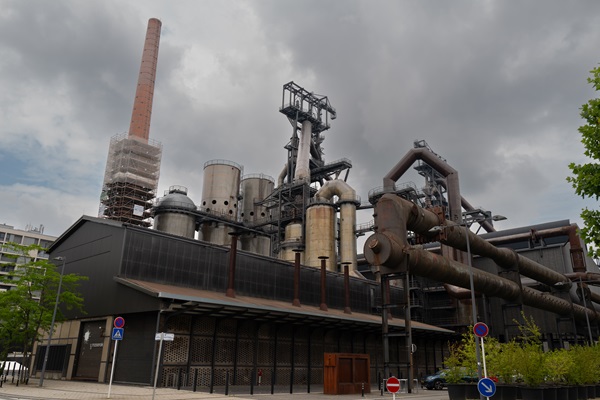 Blast furnaces in Esch-Belval;
Credit: Ali Sahib
Blast furnaces in Esch-Belval;
Credit: Ali Sahib
Known today mainly for its financial sector, Luxembourg’s economy has undergone significant changes over the years, going from an agriculture- and crafts-dominated economy to an industrial hub and a leading steel producer in the 19th and 20th centuries.
This series of articles looks at the industrial heritage of Luxembourg, from the steel industry and slate quarrying (and other forms of mining) to the textile industry and rose growing.
First up is the steel industry.
Luxembourgish economist Carlo Hemmer (1913-1988) is quoted as having said: “Just as Egypt is a gift of the Nile, Luxembourg is a gift of iron”.
The early 1840s saw the discovery of “minette” iron ore deposits in the south - aptly named the “Minett” region. In 1842, Luxembourg joined the German Customs Union (Zollverein) and could increase its exports. The 19th century also saw the construction of the railway network which facilitated the transport of ore, coal and steel. Industrial sites popped up across the region, notably in Esch-sur-Alzette, Schifflange and Dudelange, attracting workers from Germany, Italy and later Portugal to the country. In 1911, several steel companies merged to create ARBED, a major steel producer and predecessor of today’s ArcelorMittal.
Whilst the steel industry began to decline in the mid-1970s, its legacy lives on. Traces of this industrial heritage can be found notably in the Minett region. Highlights include the iconic blast furnaces in Esch-Belval, which are open for self-guided tours year-round (during opening hours). Another notable example is the Fond-de-Gras industry and railway park in Lasauvage. The site was once a major mining centre in Luxembourg. The Train 1900 tourist train has been operating since 1973, later joined by the Minièresbunn mining train.
The National Mining Museum in Rumelange and the Museum of the Cokerill Mine in the Ellergronn nature reserve (Esch-sur-Alzette) also offer glimpses into this industrial past. Many of these sites feature on the Minett Tour - a 35 km tour of the region linking nine locations. Esch2022 - European Capital of Culture also shone a spotlight on the region’s industrial heritage.








